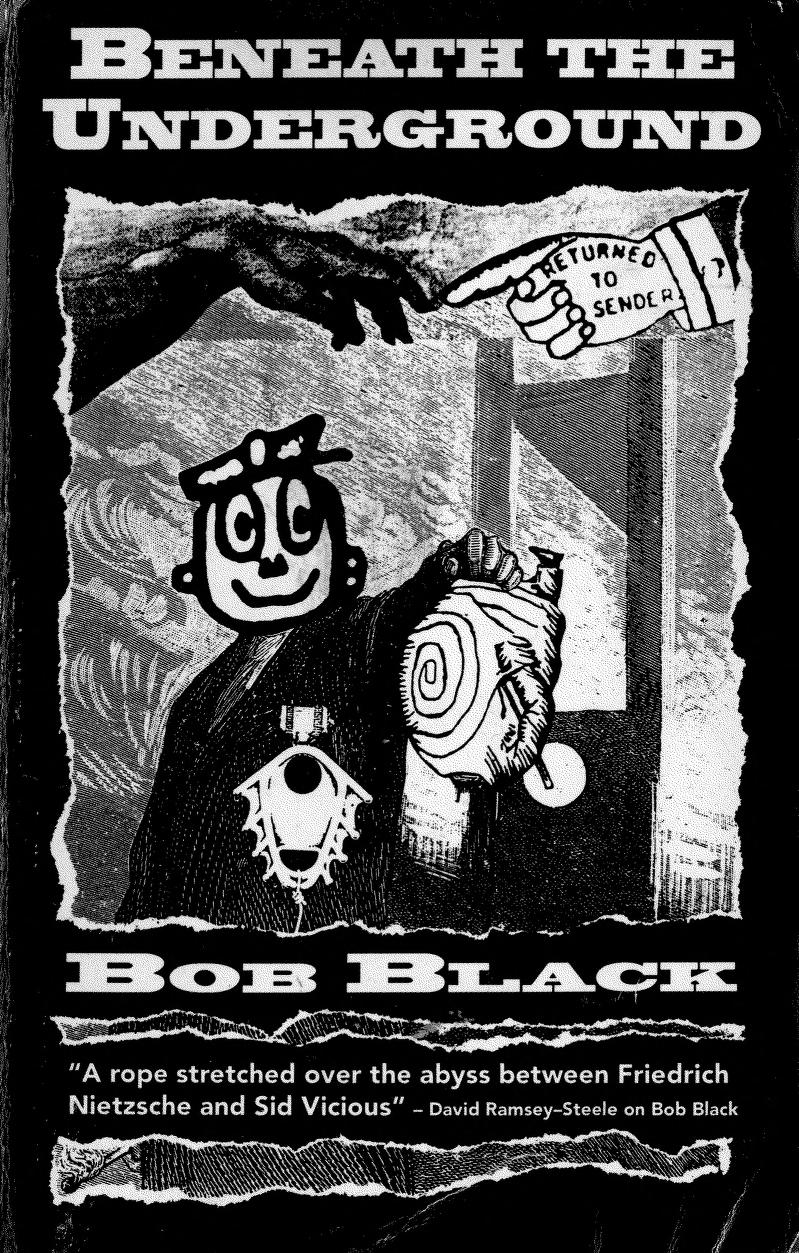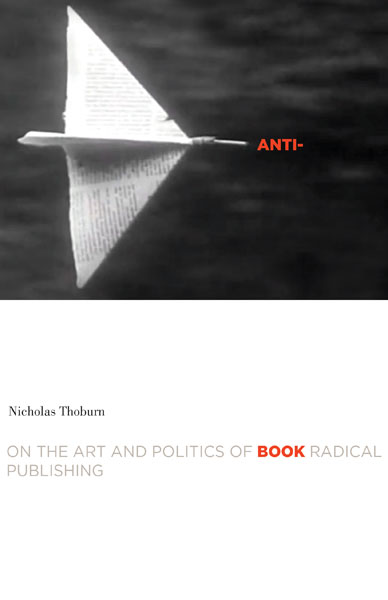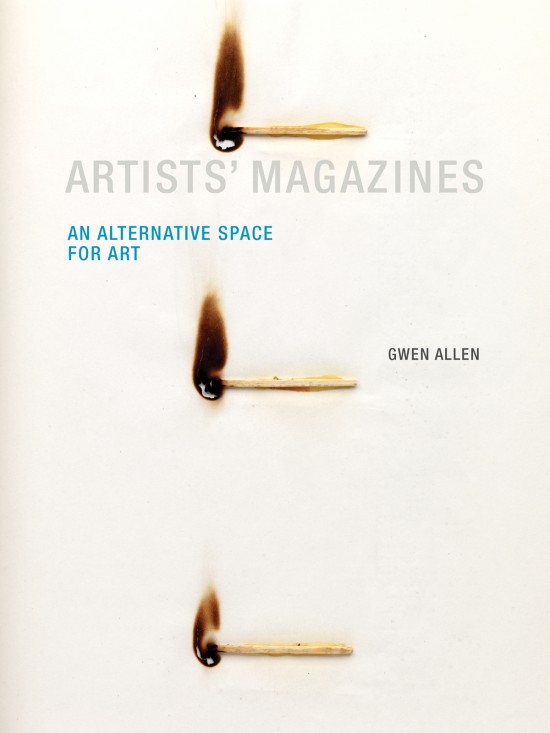Bob Black: Beneath the Underground (1994)
Filed under book | Tags: · anarchism, artists book, magazine, publishing, zine culture

“Beneath the Underground is an in-depth exploration, from within, of a cultural phenomenon named by Bob Black as the ‘marginals milieu.’ You could also call it the do-it-yourself subculture. It consists of self-publishers of micro-circulation ‘zines’ and other self-produced art, music, pamphlets, and posters.”
Publisher Feral House, Portland, OR, 1994
ISBN 9780922915217, 0922915210
x+190 pages
via whatwillittake
Nicholas Thoburn: Anti-Book: On the Art and Politics of Radical Publishing (2014–) [EN, SC]
Filed under book | Tags: · alternative media, artists book, literary criticism, magazine, mass media, politics, print, publishing

“No, Anti-Book is not a book about books. Not exactly. And yet it is a must for anyone interested in the future of the book. Presenting what he terms “a communism of textual matter,” Nicholas Thoburn explores the encounter between political thought and experimental writing and publishing, shifting the politics of text from an exclusive concern with content and meaning to the media forms and social relations by which text is produced and consumed. Taking a “post-digital” approach in considering a wide array of textual media forms, Thoburn invites us to challenge the commodity form of books—to stop imagining books as transcendent intellectual, moral, and aesthetic goods unsullied by commerce. His critique is, instead, one immersed in the many materialities of text.
Anti-Book engages with an array of writing and publishing projects, including Antonin Artaud’s paper gris-gris, Valerie Solanas’s SCUM Manifesto, Guy Debord’s sandpaper-bound Mémoires, the collective novelist Wu Ming, and the digital/print hybrid of Mute magazine. Empirically grounded, it is also a major achievement in expressing a political philosophy of writing and publishing, where the materiality of text is interlaced with conceptual production. Each chapter investigates a different form of textual media in concert with a particular concept: the small-press pamphlet as “communist object,” the magazine as “diagrammatic publishing,” political books in the modes of “root” and “rhizome,” the “multiple single” of anonymous authorship, and myth as “unidentified narrative object.””
Publisher University of Minnesota Press, 2016
Cultural Critique Books series
ISBN 9780816621965, 0816621969
xvi+372 pages
Interview with author: Ron Hanson (White Fungus, 2020).
Reviews: Filipe Carreira da Silva (Contemporary Political Theory, 2017), Anthony Iles (Mute, 2018), Samuel A. Moore (Cultural Studies, 2018), Ola Ståhl (Parallax, 2018), Nick Thurston (Comparative Critical Studies, 2019), Martin Paul Eve (American Literature, 2019), Terrine M. Friday (Canadian Journal of Communication, 2019), Simone Murray (Left History, 2019).
Publisher (EN)
Publisher (SC)
WorldCat (EN)
Anti-knjiga: Materijalni tekst i političko izdavaštvo (Serbo-Croatian, 2014, 1 MB, added on 2017-5-2)
Anti-Book: On the Art and Politics of Radical Publishing (English, 2016, HTML; PDF, updated on 2019-7-2)
Gwen Allen: Artists’ Magazines: An Alternative Space for Art (2011)
Filed under book | Tags: · art, artists book, conceptual art, fluxus, magazine, mail art, photography, poetry, publishing

“Magazine publishing is an exercise in ephemerality and transience; each issue goes out in the world only to be rendered obsolete by the next. To publish a magazine is to enter into a heightened relationship with the present moment. During the 1960s and 1970s, magazines became an important new site of artistic practice, functioning as an alternative exhibition space for the dematerialized practices of conceptual art. Artists created works expressly for these mass-produced, hand-editioned pages, using the ephemerality and the materiality of the magazine to challenge the conventions of both artistic medium and gallery. In Artists’ Magazines, Gwen Allen looks at the most important of these magazines in their heyday (the 1960s to the 1980s) and compiles a comprehensive, illustrated directory of hundreds of others.
Among the magazines Allen examines are Aspen (1965–1971), a multimedia magazine in a box—issues included Super-8 films, flexi-disc records, critical writings, artists’ postage stamps, and collectible chapbooks; Avalanche (1970-1976), which expressed the countercultural character of the emerging SoHo art community through its interviews and artist-designed contributions; Art-Rite (1973-1978), an irreverent zine with a disposable, newsprint format; Real Life (1979-1994), published by Thomas Lawson and Susan Morgan as a forum for the Pictures generation; 0 to 9 (1967–1969), a mimeographed poetry magazine founded by Vito Acconci and Bernadette Meyer; FILE (1972–1989), founded by the Canadian collective General Idea, its cover design a sly parody of Life magazine; and Interfunktionen (1968–1975), founded to protest the conservative curatorial strategies of Documenta. These and the other magazines Allen examines expressed their differences from mainstream media in both form and content: they cast their homemade, DIY quality against the slickness of an Artforum, and they created work that defied the formalist orthodoxy of the day. (A work by John Baldessari from the late 1960s shows a photograph of Artforum, captioned “THIS IS NOT TO BE LOOKED AT.”) Artists’ Magazines, featuring abundant color illustrations of magazine covers and content, offers an essential guide to a little-explored medium.”
Publisher MIT Press, 2011
ISBN 0262015196, 9780262015196
300 pages
Reviews: Maarten van Gageldonk (Tijdschrift voor Tijdschriftstudies, 2012), Lucy Mulroney (West 86th, 2012), Alexander Provan (Bidoun, 2011), Dave Dyment (Magenta, 2012), Guy Crucianelli (PopMatters, 2011).
PDF (removed on 2018-8-20 upon request from publisher)
Comment (0)
